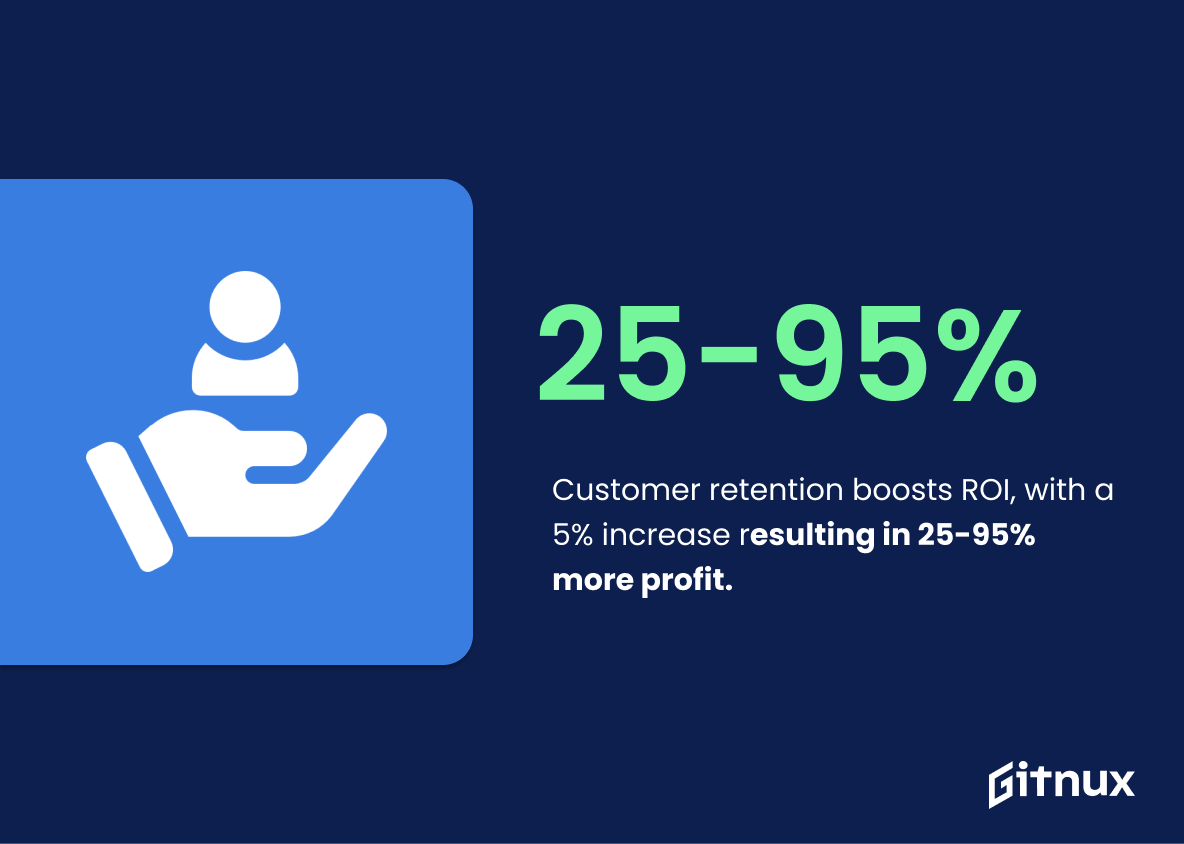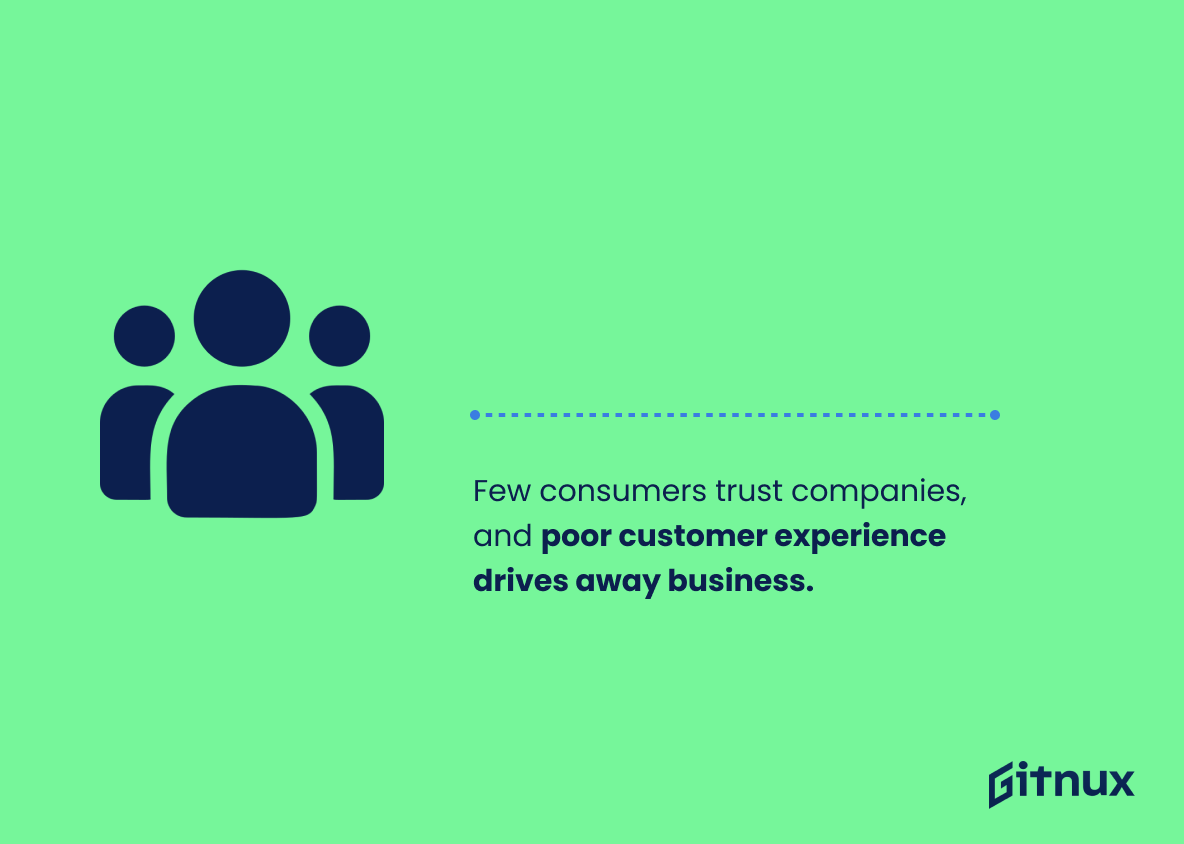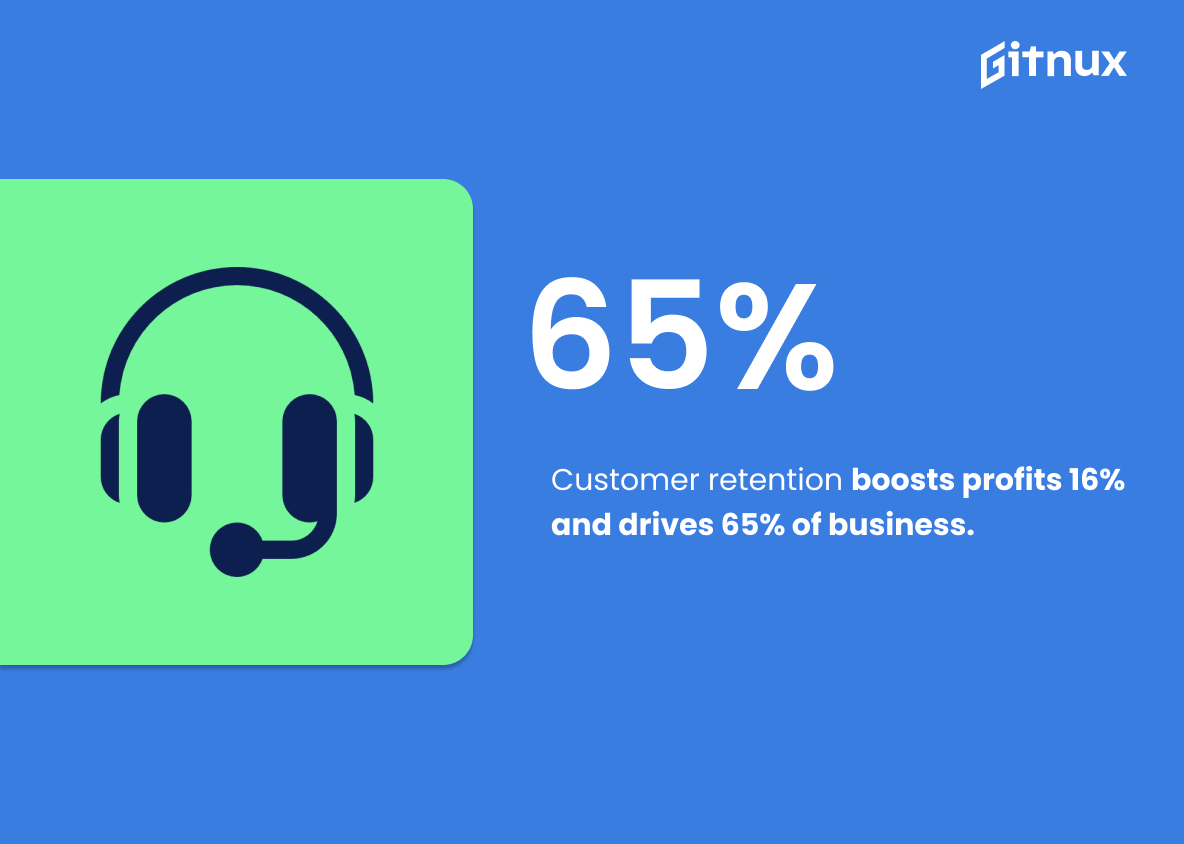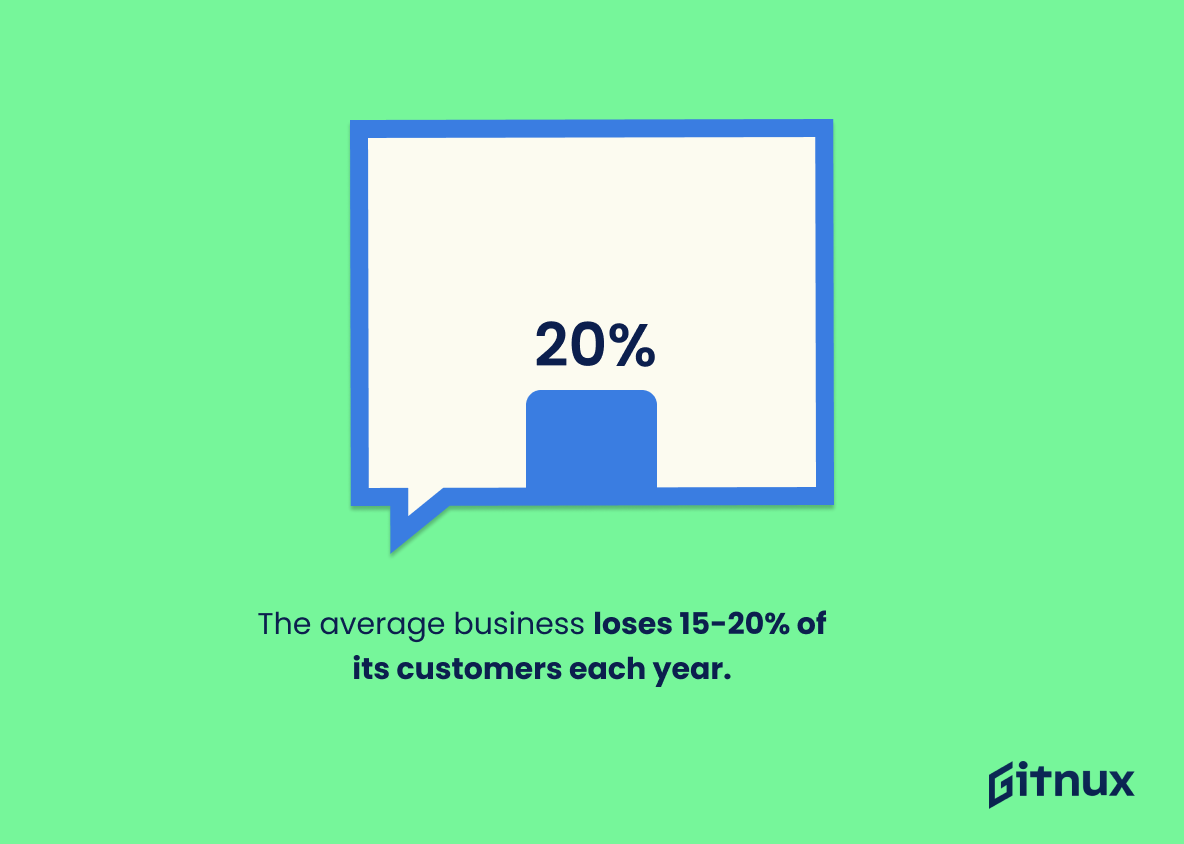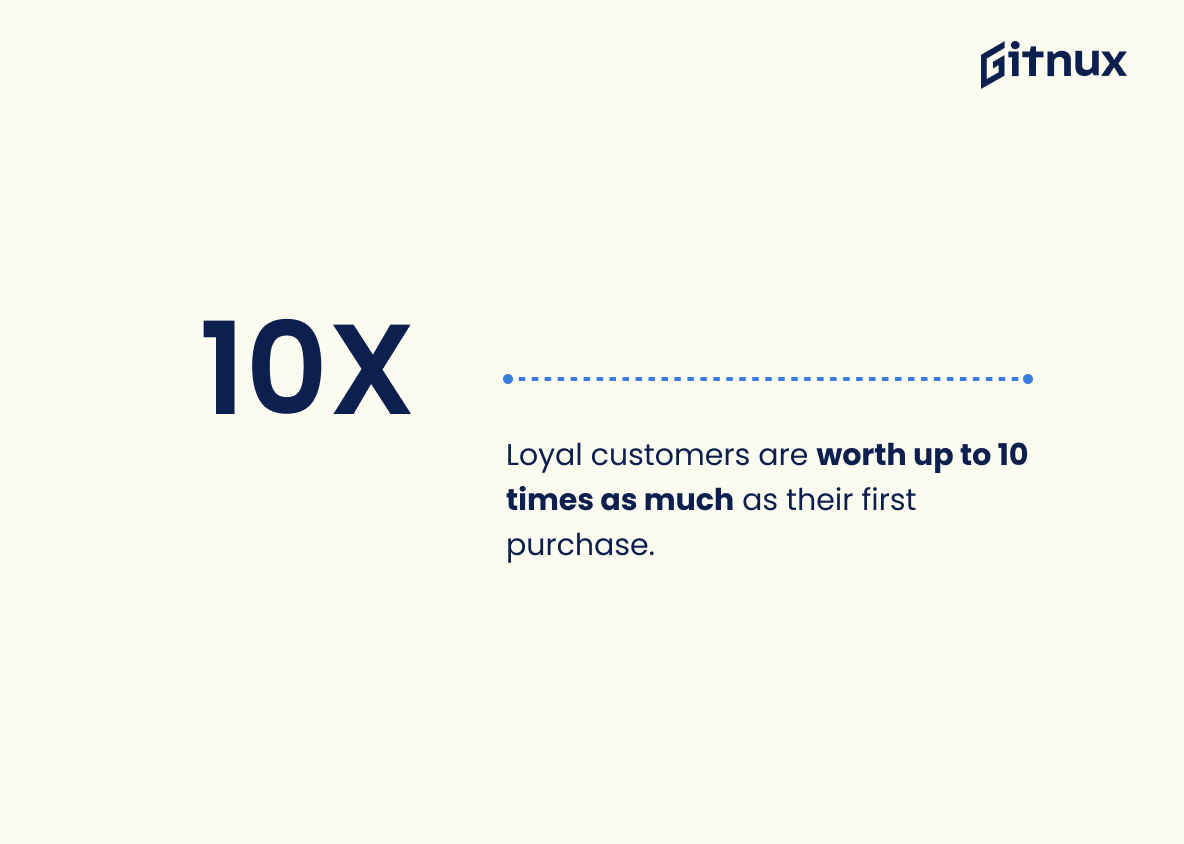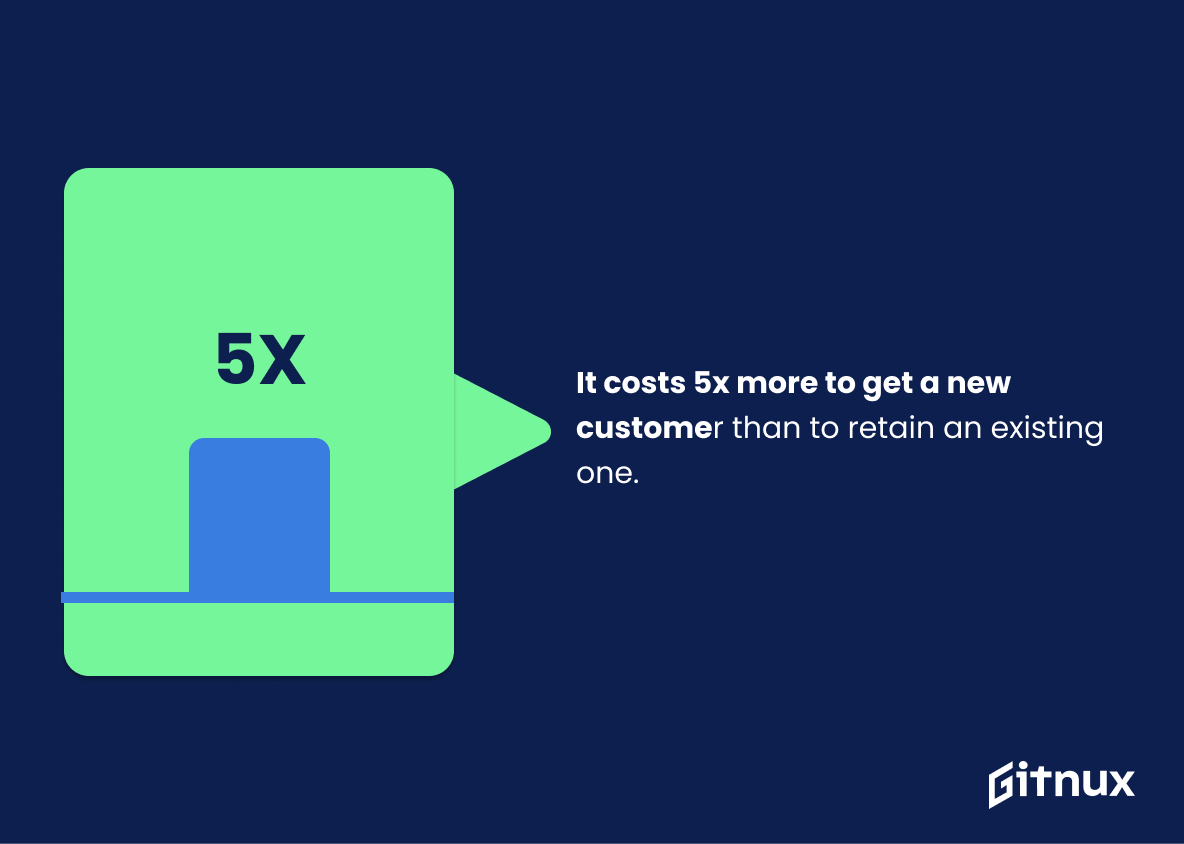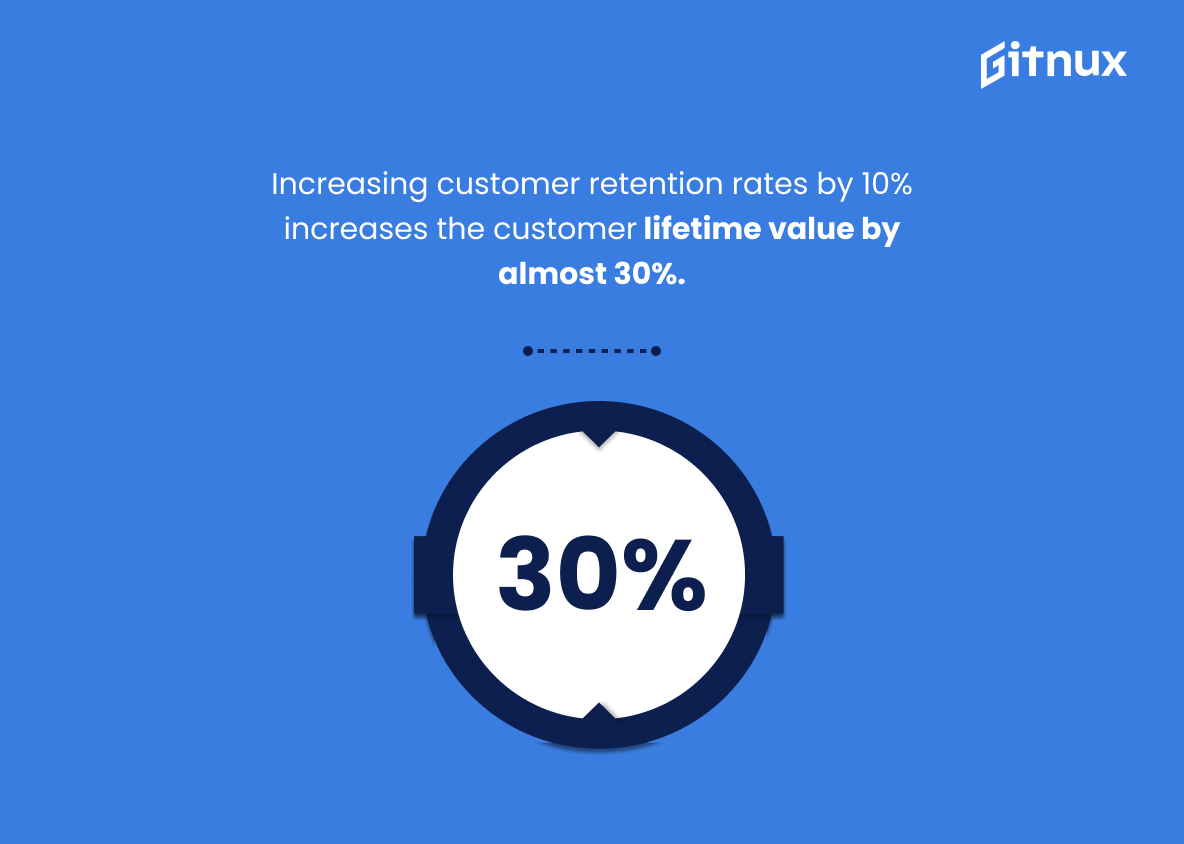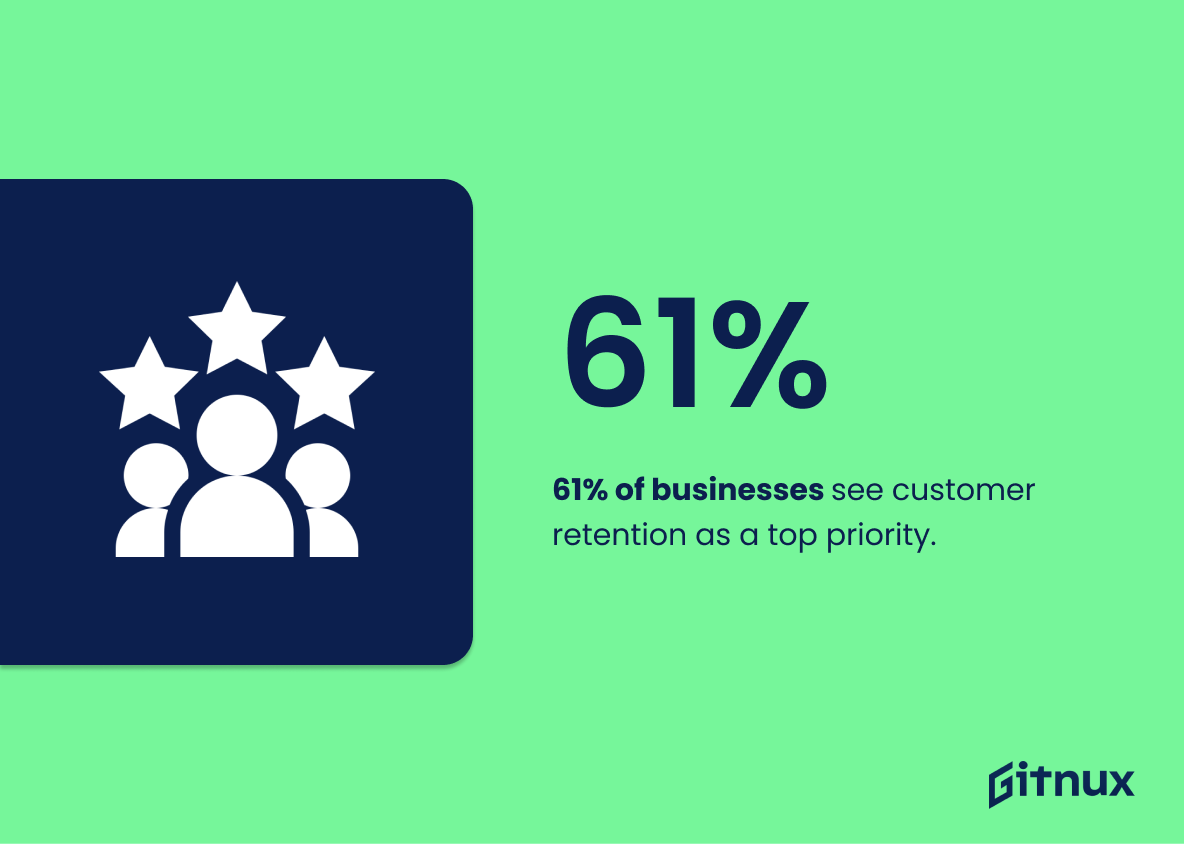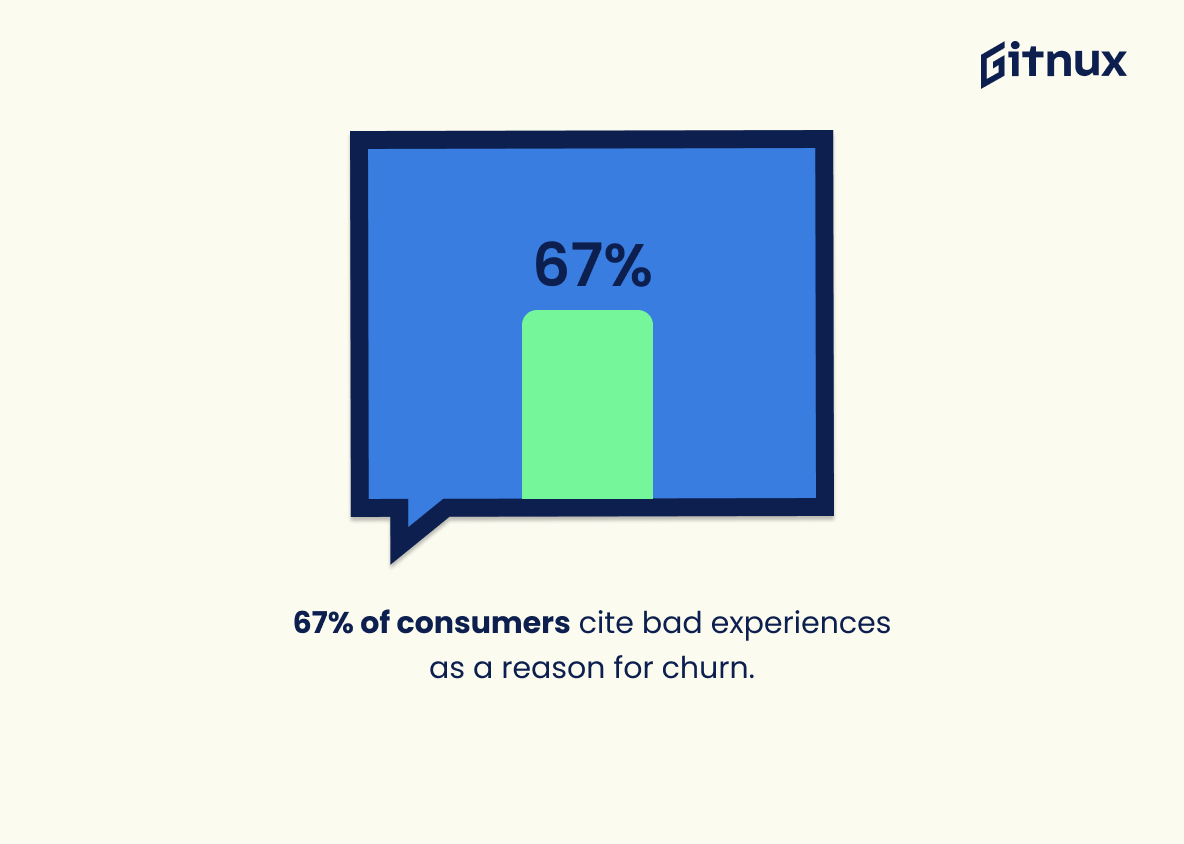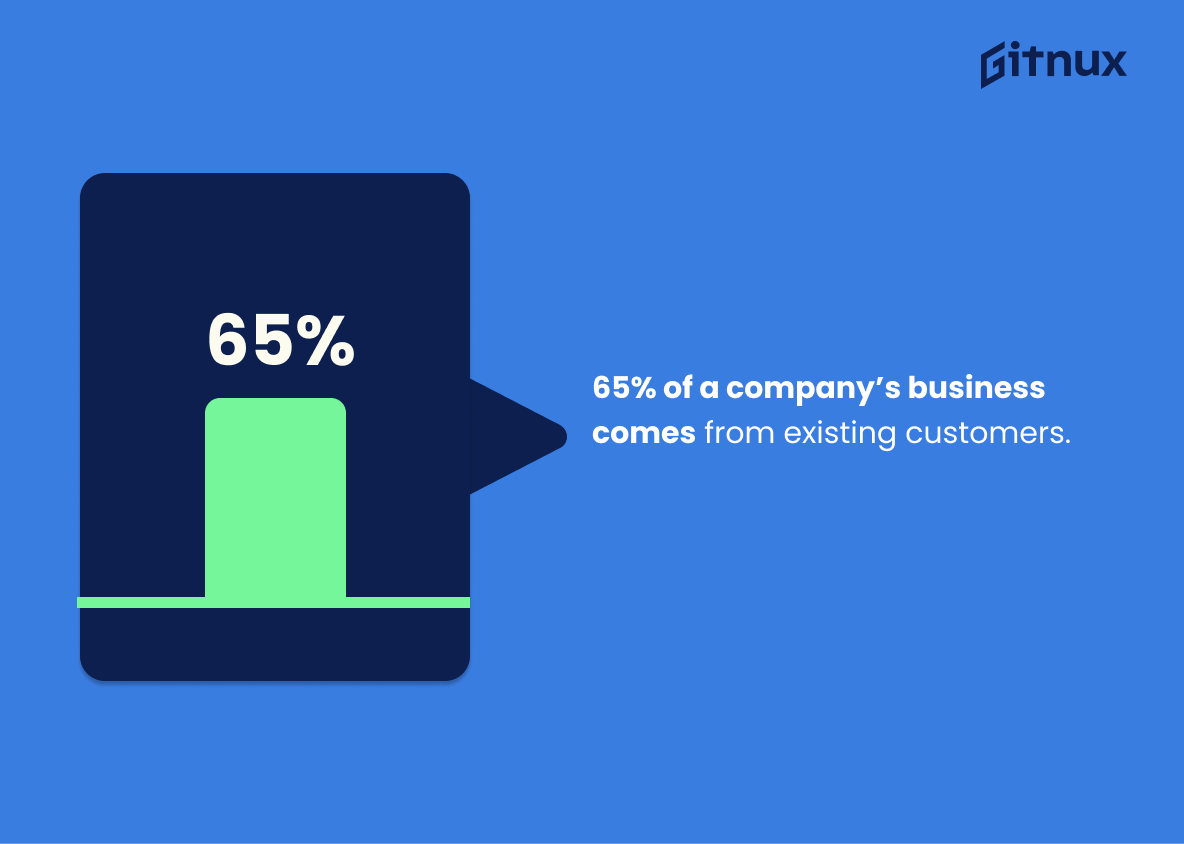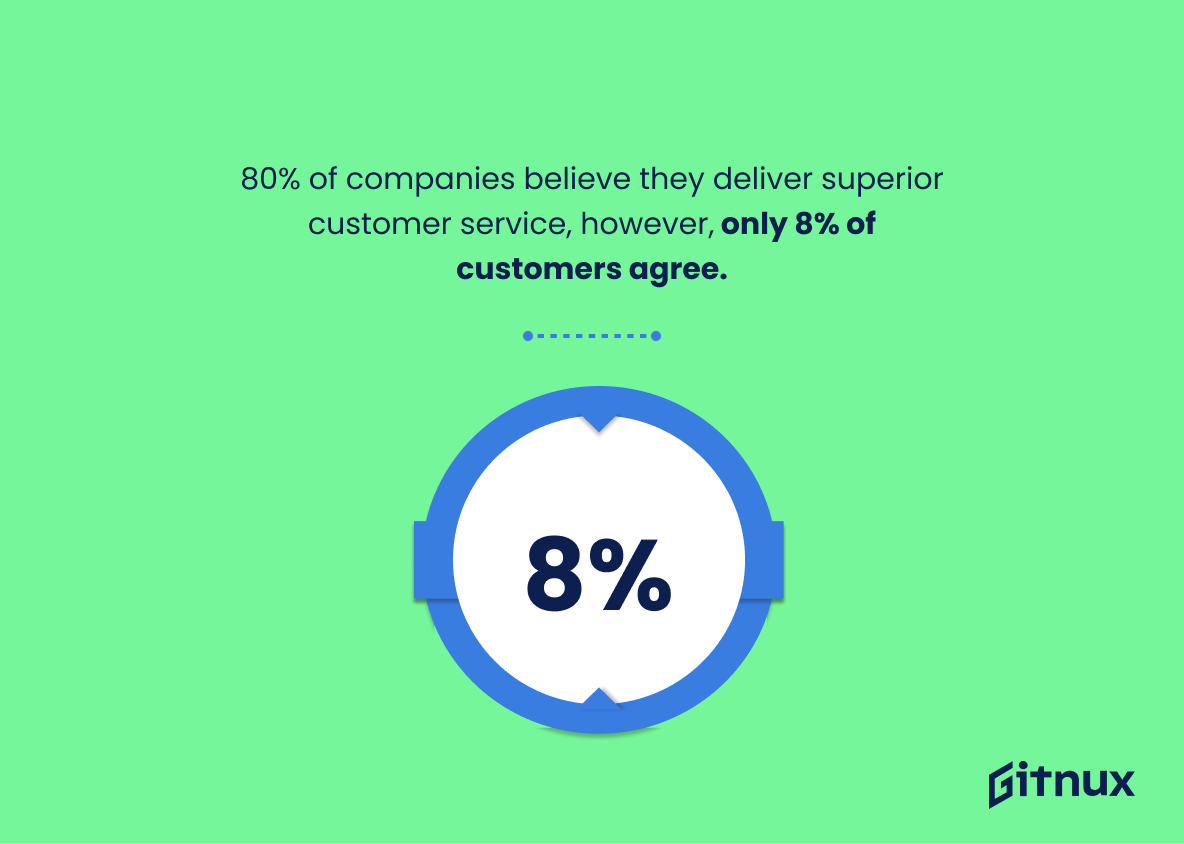Are you looking for ways to increase customer retention? Are you curious about the latest customer retention statistics? If so, you’ve come to the right place.
In this blog post, we’ll explore the latest customer retention statistics and discuss strategies for improving customer retention. We’ll also provide tips for leveraging customer retention data to inform your business decisions. So, let’s get started.
Customer Retention: The Most Important Statistics
48% of customers generally trust companies, 36% do not trust companies, and only 40% of consumers would consider doing business with a company with poor customer experience.
Companies investing in omni-channel customer engagement strategies have seen a 10% year-on-year growth, 10% increase in average order value, and 25% increase in close rates.
Customer Retention Statistics Overview
Customer Retention has a significant impact on ROI, with a 5% increase in CR resulting in a 25-29% increase in revenue and a 25-95% increase in profitability.
This highlights the potential financial gains that can be made from investing in customer loyalty management programs. Additionally, it proves that a small percentage of customers can generate a large portion of a company’s revenue, which further emphasizes the importance of customer retention.
Retaining existing customers is 6-7x more cost-effective than acquiring new customers, and can increase profits by 25-95%.
Thus, there is a high importance of customer retention in terms of profitability and cost-effectiveness. Companies should focus on retaining existing customers in order to maximize profits and minimize costs.
48% of customers generally trust companies, 36% do not trust companies, and only 40% of consumers would consider doing business with a company with poor customer experience.
Therefore, customer experience is an important factor in the decision of individuals to continue doing business with an organization. Poor customer experience can lead to customers not trusting the company and not considering doing business with them, which can lead to a decrease in customer retention.
Companies that invest in customer experience can expect to increase revenue by up to $1 billion within 3 years.
This proves that companies that invest in customer experience can expect to see a significant return on investment. Additionally, it demonstrates that customers are willing to pay more for a great customer experience, which is essential for customer retention.
Research shows that businesses make sales to between 5-20% of new customers, but that jumps to 60-70% for existing customers, emphasizing the importance of strong customer retention practices.
By understanding customer retention rates, businesses can identify areas that need improvement and develop strategies to increase customer loyalty. This helps businesses to increase their profitability and provide customers with a better shopping experience.
Companies that focus on customer retention can see a significant increase in profits and a 16% price premium on products and services, with almost 65% of their business coming from repeat customers.
Retention is cheaper than acquisition, and repeat customers spend significantly more than other customers, which highlights the importance of providing a great customer experience in order to retain customers and increase profits.
Industry retention rates vary widely, with media and professional services having the highest rate (84%) and hospitality/travel/restaurant industries having the lowest (55%).
Knowing the industry retention rates can help businesses identify areas of improvement and develop strategies to increase customer retention. Additionally, understanding the top delivery methods used for retention (in this case, email) can help businesses optimize their retention strategies.
Across multiple industries, customer retention rates average out at 72.5%, with computer software and telecommunications sectors experiencing 86% and 69% retention rates respectively.
It is important to be aware of the help of the customer retention rate for businesses, to identify areas of improvement and develop strategies to increase customer loyalty. Additionally, understanding customer retention rates across different industries can help businesses benchmark their performance against their competitors.
Companies investing in omni-channel customer engagement strategies have seen a 10% year-on-year growth, 10% increase in average order value, and 25% increase in close rates.
Investing in omni-channel customer engagement strategies can have a positive impact on customer retention. Companies that focus on providing personalized customer service and a mobile customer experience are more likely to see an increase in customer retention, as well as an increase in sales.
52.6% of companies surveyed plan to outsource technology-related changes and invest an average of $375K USD in their loyalty program.
Supplementary Statistics
A 5% increase in customer retention can lead to a 25-95% increase in profit.
It highlights the fact that a relatively small increase in customer retention can lead to a dramatic increase in profits. This is an invaluable insight for any business looking to maximize their profits, and it serves as a great starting point for any blog post about customer retention statistics.
The average business loses 15-20% of its customers each year.
Businesses must take proactive steps to ensure that their customers remain loyal and engaged, or risk losing a significant portion of their customer base each year.
Loyal customers are worth up to 10 times as much as their first purchase.
By understanding the value of loyal customers, businesses can make informed decisions about how to best allocate resources to ensure customer loyalty and maximize profits.
It costs 5x more to get a new customer than to retain an existing one.
Businesses should not only focus on acquiring new customers, but also on keeping the ones they already have. By investing in customer retention, businesses can save money and maximize their profits.
Increasing customer retention rates by 10% increases the customer lifetime value by almost 30%.
Investing in customer retention can have a significant impact on the customer lifetime value, making it a key factor in the success of any business. By increasing customer retention rates, businesses can not only increase their customer base, but also increase their profits.
61% of businesses see customer retention as a top priority.
The majority of businesses recognize the value of keeping their customers engaged and loyal, and are willing to invest in strategies to ensure that they do. This statistic is a great starting point for a blog post about customer retention statistics, as it provides a clear indication of the importance of customer retention and the need for businesses to focus on it.
67% of consumers cite bad experiences as a reason for churn.
Customers are more likely to leave a company if they have had a bad experience, rather than staying and giving the company a chance to make it right. This is why customer retention strategies should focus on providing a great customer experience, as this will help to reduce churn and keep customers loyal.
A 2% increase in customer retention has the same effect as reducing costs by 10%.
A small increase in customer retention can have a significant impact on costs, making it a key factor in the success of any business. By understanding the value of customer retention, businesses can make informed decisions about how to best allocate resources to ensure customer loyalty and satisfaction.
65% of a company’s business comes from existing customers.
A significant portion of a company’s business comes from customers who have already made a purchase. This means that investing in customer retention strategies can be a great way to ensure that a company’s customer base remains loyal and continues to generate revenue.
80% of companies believe they deliver superior customer service, however, only 8% of customers agree.
It highlights the importance of customer retention, as companies must strive to bridge this gap in order to keep customers coming back. It also serves as a warning to companies that they must take customer feedback seriously and make changes to their customer service strategies in order to ensure customer satisfaction.
89% of businesses compete on the basis of customer experience.
As such, it is an important factor to consider when discussing customer retention statistics, as it can provide insight into how businesses are attempting to retain customers through providing a positive customer experience.
77% of customers are more likely to stay with a company if their issues are resolved quickly.
Customers value responsiveness and that companies should prioritize resolving customer issues quickly in order to retain their loyalty. This statistic is a key piece of evidence that customer retention strategies should focus on providing timely and effective customer service.
Customers with a strong emotional connection to a brand have a 306% higher lifetime value.
Thus, customers who feel a strong emotional connection to a brand are more likely to remain loyal and have a higher lifetime value. This is invaluable information for any business looking to maximize customer retention and increase their bottom line.
83% of consumers expect help from a human customer service representative, even with digital service channels.
It highlights the fact that customers still value the personal touch of a human representative, even when digital service channels are available. This is an important point to consider when developing strategies to retain customers, as it suggests that providing a human touch is essential for customer satisfaction and loyalty.
73% of customers fall in love with a brand due to friendly customer service representatives.
Therefore, customers are more likely to stay loyal to a brand if they feel that their needs are being met by friendly and helpful customer service representatives. This is an invaluable insight for businesses looking to increase customer retention, as it suggests that investing in customer service is a key factor in keeping customers engaged and loyal.
Conclusion
In conclusion, customer retention is an important factor for any business. It is essential to understand the customer retention statistics and use them to your advantage. By understanding the customer retention statistics, you can create strategies to increase customer loyalty and retention.
Additionally, you can use these statistics to identify areas of improvement and create strategies to increase customer satisfaction. With the right strategies, you can ensure that your customers remain loyal and continue to purchase from your business.
References
thinkimpact.com/customer-retention-statistics/
https://www.zippia.com/advice/customer-retention-statistics/#:~:text=The%20average%20customer%20retention%20rate,followed%20by%20retail%20at%2063%25.
https://financesonline.com/customer-retention-statistics/
https://www.superoffice.com/blog/customer-experience-statistics/
https://www.businessnewsdaily.com/16027-customer-retention-rate.html
https://www.annexcloud.com/blog/21-surprising-customer-retention-statistics-2021/
https://explodingtopics.com/blog/customer-retention-rates
https://customergauge.com/blog/average-customer-retention-rate-by-industry
https://www.fullview.io/blog/cx-trends-in-2023
antavo.com/blog/loyalty-program-trends-2023/
https://www.microsoft.com
https://www.gallup.com
https://www.smallbizgenius.net
https://www.profitwell.com
https://www.copper.com
https://www.gartner.com
https://www.huffpost.com
https://www.rightnow.com
https://www.bain.com
https://www.superoffice.com
https://www.pwc.com
https://hbr.org
https://go.forrester.com
https://www.accenture.com
